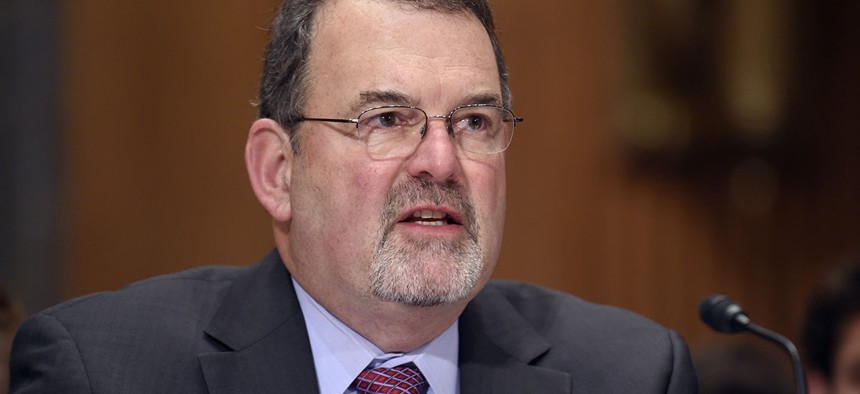Federal CIO on IT Upgrade Fund: ‘The Bigger Risk is Not Doing Anything’

Federal CIO Tony Scott Susan Walsh/AP
There is bipartisan dismay at the age of some critical IT systems that house everything from taxpayer data to benefits claims.
Federal Chief Information Officer Tony Scott used a congressional hearing Wednesday on the government’s outdated technology to argue for legislation that would create a $3.1 billion modernization fund agencies could borrow against to upgrade their most critical systems.
Some of the government’s oldest technology, revealed in a Government Accountability Office investigation and first reported by Nextgov, clearly flummoxed committee members and appeared to bolster Scott’s arguments for the fund.
House Oversight and Government Reform Committee Chairman Jason Chaffetz, R-Utah, displayed an 8-inch floppy disk before the committee, marveling that 1970s era hardware is still used in the Defense Department systems that coordinate operations of the United States nuclear forces.
The dismay at the age of some of the critical systems that house everything from taxpayer data to benefits claims was bipartisan, with members of both parties, including Gerry Connolly, D-Va., acknowledging the government’s current technology trajectory is risky at best.
Scott said he believes the IT modernization fund is the answer.
“This is the best we can think of moving forward,” Scott told members of the committee.
» Get the best federal technology news and ideas delivered right to your inbox. Sign up here.
Scott acknowledged the risks inherent in setting aside an additional $3.1 billion – IT projects don’t have the best track record in government. But he promised doing so would align better with private sector best practices.
A board of experts, he said, would “act independently of any one agency” in identifying the highest-priority projects in government. The proposal would require agencies to pay back borrowed money over time, stretching an initial $3.1 billion investment into $12 billion over the next decade.
“The bigger risk is not doing anything,” Scott said. “If you’re riding a dead horse, it’s best to dismount. I think it’s time to dismount from past practices and modernize.”
Already, about 75 percent of the government’s $90 billion IT budget is spent on legacy systems, leaving little money for development and modernization efforts within agencies.
Scott revealed more than $3 billion worth of software services in the government will be unsupported by vendors within the next three years.
The modernization fund “is my best guess about the fastest way to accelerate progress,” Scott said. “I’m happy to listen to other alternatives.”
Chaffetz, who had previously criticized the proposal, indicated after the hearing he was “warming up” to it, but said he still wanted to look at some of those alternatives.
For example, agencies are still leaving a significant amount of potential savings on the table by failing to adhere to existing IT policies. Dave Powner, director of management IT issues for GAO, stated agencies are missing out on billions in savings by failing to close data centers alone. Agencies could also improve their IT bottom lines by continuing to improve their implementation of the Federal Information Technology Acquisition and Reform Act.
Chaffetz said he was more inclined to provide resources to CIOs who have demonstrated savings “rather than writing a blank check to all CIOs.”
At times, the hearing grew contentious and occasionally heated.
Rep. Mark Meadows, R-N.C., peppered Scott with questions about whether the White House skirted annual cybersecurity reviews. Rep. Ted Lieu, D-Calif., ended an exchange with Pentagon CIO Terry Halvorsen with the line, “Are you aware of any successful company that uses 8-inch floppy disks?”
Halvorsen quickly countered that the Strategic Automated Command and Control System was “safe and reliable,” and will be completely updated by the end of fiscal 2017.



